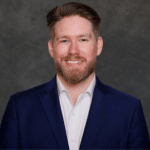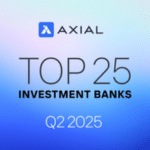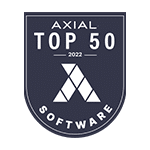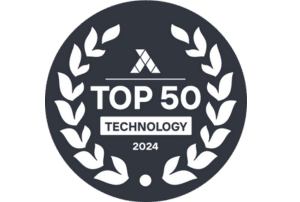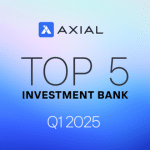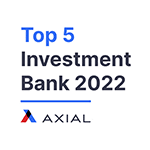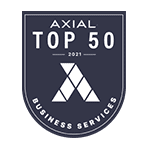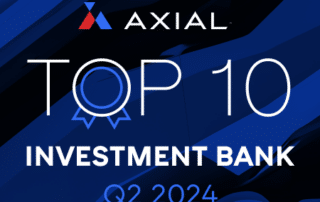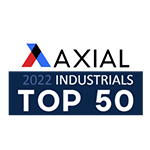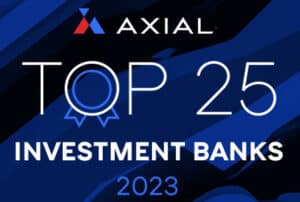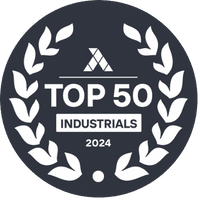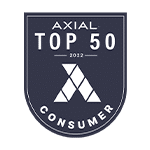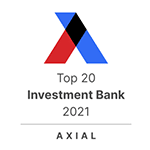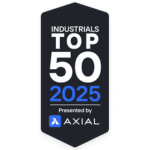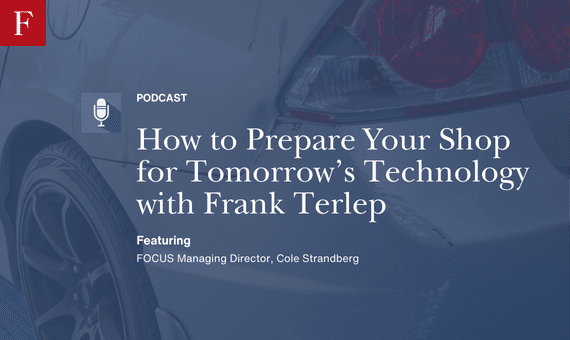
How to Prepare Your Shop for Tomorrow’s Technology with Frank Terlep
On this week’s episode, Cole Strandberg chats with Frank Terlep. With decades of experience and a front-row seat to the collision repair industry’s tech evolution, Frank is one of the most insightful voices when it comes to emerging technologies, ADAS, and the future of collision repair. In this conversation, they unpack the latest advancements in vehicle safety systems, talk about how collision shops can prepare for what’s next, and hear Frank’s predictions on where the industry is headed. Whether you’re an operator, technician, or investor in this space, you’ll want to hear what Frank has to say.
Cole Strandberg: It always gets me fired up. Not to hype you up before we get started here, but there’s a level of just Oracle here. You see things happening and developing before other people do. So always fun. And that’s where I want to focus here today. To that point, you always seem to have your finger on the pulse of what’s next and what’s happening in this industry. What’s exciting you right now in the world of kind of the broader collision repair technology?
Frank Terlep: Well, obviously Cole, and you’ve been covering this for a while. ADAS continues to be in the forefront for a lot of reasons. Obviously more and more vehicles with ADAs, more and more shops trying to figure out ADAs. Now the insurance industry is sort of both feed in per se in terms of, you know, you’ve covered the, the recent State Farm announcement. So I, I continue to say adas will continue to be at the forefront for some time. But I also think you’re, you’re going to see from a technology perspective more and more AI show up in different places of the market. I mean there’s already been AI if you, if you remember Tractable came out, it was a big launch and so in CCC and Mitchell and, and Audit Tax. So you know, AI has been I’ll say sort of out there in little segments, I. E. Imaging. But, but I think the two big things you’re going to see over the next two or three years, ADAs, more of ADAs and of course AI, AI and more AI.
Cole Strandberg: I want to dive into both of those and AI to me is, is the ultimate X factor in this industry and beyond. But I’m going to save that for, for the latter part of, of this piece of the conversation. Let’s do talk ADAS calibration. Whenever we first had you on the show, it felt like we were still in the really early innings of kind of getting this figured out. I still have the suspicion we’re in the early innings, but certainly later in the early innings, lot of new entrants, lot of people out there. It felt like this last year, year and a half has really been a bit of a land grab for different companies across the country trying to stake their claim in these fresh markets. They may be a little less fresh than they once were. Talk to me about what you’re seeing there in terms of growth in the players out there and the saturation in this market. Do you think we’re getting close to meeting demand for today and in the future?
Frank Terlep: Well, I don’t even think we’re even close. And when you use the term saturation. No, I mean you, you know, you’ve got probably, and I’m going to use a round number, 250 to 300 players.
Cole Strandberg: Which feels like about triple from maybe even 12, 18 months ago, at least.
Frank Terlep: Yeah, probably right. But think about it, Cole. We’ve got 35000 shops, right? Collision shops and two or three, let’s just say there’s 300. We’re not even close to being able to cover, cover the, the need in terms of calibrations and eat at services. But yeah, you’re seeing the Elitex of the world grow rapidly, the protects of the world grow rapidly. But you’re also seeing these regional players show up. Express, Smart, Express, Precision Diagnostics, they’re popping up all over. So yes, I think that, I love your term land grab. Right. But at the same time, the insurers are also going to be driving the market a little differently than it’s been driven.
Cole Strandberg: Sure.
Frank Terlep: And I see that because, and you know this, there’s, they’re now figuring out, wait a minute, I gotta find a way to manage all these different, these different invoices that are coming in for calibrations. So you’ve got the two, you’ve got those two dynamics, you’ve got the land grab, ie for, I call them providers, calibration providers. But you also have the insurers now waking up going, wait a minute, I’ve gotta, I’ve gotta have a methodology, one way, shape or form to, to manage this, which, which, which, which is also now again building a, a virtual triangle again, a shop, a provider and an insurer. So it’s an interesting dynamic. Now it’s not just the consumer and the shop and the insurer. You have now this call, a fourth piece, a provider, so called a diamond.
Cole Strandberg: Very, very interesting and it’s so cool. I’m going to link our previous conversation here because it’s been a few months now and that was before a lot of these insurance developments started to begin. And when we look at the landscape here, the opportunity is very, very clear. We talked last time about some of the risks and if I recall, some of the primary risks were insurance, that X factor, sort of a question mark of where they were going to come in. And number two, technological innovation. We’ll talk a little bit about that. But we now have some clarity into what the insurance piece is. It’s no longer viewed as a risk. We see it, it’s not the boogeyman. It was even a few short months ago. And we’re gonna, we’re gonna be just fine through that. Is that fair to say? Or do we see more change coming on the insurance side in the near future?
Frank Terlep: Well, you have to think about it, Cole. You know the insurance boogeyman terminology, right? A little unfair in my opinion. Even though I’ve been a shop guy for my whole life, the insurers, if you think about it, the insurers need people and companies to be able to properly calibrate vehicles. They, I mean it’s a requirement, right. If they’re going to pay for a repair or take care of that consumer from an insurance perspective now they’ve got to have, they’ve Got to have people who won’t be able to do calibration. So I think, I think they’re, they’re, they’re still trying to figure out, and I think the industry is as well, how do we make sure we get the right people doing the appropriate calibrations, right? Because whether we like it or not, I still think it’s the wild wild west out there in terms of people doing calibrations in parking lots, in the open air, in, in little, you know, and they’re doing them in trailers, blah, blah, blah. Right. So, so that, that insurance dynamic will continue to, to, to get better, I think.
Cole Strandberg: Very, very interesting. It’s supply and demand, right? We don’t have enough supply to meet demand. So we need to incentivize folks to increase supply. Therefore, insurance has to be a little bit friendly on how that’s treated. But trying to corral that, keep us from being in the wild wild west makes sense.
Frank Terlep: But there, there is another dynamic and we were, I was just talking about this with our executive team yesterday. ADAS is doing its job. And so you’ve talked to a lot of people in the marketplace. The marketplace. The number of claims are going down, right? Totals are going up because of the age of the. So what’s happening is, in my opinion, I think the number of actual repairable vehicles and claims are going to continue to go down.
Cole Strandberg: Frank, let’s throw any outline or, or preconceived notion of what this conversation was going to be out the window because I want to dive into this. This is fascinating. This is a topic of a conversation. I have had a lot here, here of late. When I first joined the industry back in 2016. So coming up here on, on a decade ago, there was a lot of negativity around the collision repair space. ADAS was sort of in its early innings. Self driving cars were allegedly right around the corner. Shows how that goes. However, we have a lot of these changes that have happened where over the years I, I believe we as an industry have become numb to some of these major disruptors because we had a lot of Chicken Little at some point throughout the past and now. So you believe now we’re starting to actually feel the impact on the collision repair industry for some of these safety features becoming more widespread and more effective. Is that fair to say?
Frank Terlep: 100. I mean think about a call, just think about adaptive cruise control, aeb, just use those two. Right? And most of collisions, if you remember, most collisions are from the front end to the back end or the front end of the Vehicle right front, left front, right front. Well, with this type of technology, the number of rear end collisions with these AEB equipped vehicles drops dramatically. Dramatically. So those type of accidents for all intents and purposes are going to be dropped 50, 60%, which changes the whole dynamic of our collision industry 100 over time. Right. I mean, so yeah, it, the chicken little is a great, your common chicken little is so true because it, it’s now starting to work. The 8S technology is starting to work.
Cole Strandberg: And that’s a great segue into AI. We’ve seen AI in different functions throughout the collision repair industry and beyond AI. And I’ve used the term X factor here a couple times already. But AI is the ultimate X factor, I believe in technological innovation and I think that’s moving very, very quickly in terms of its impact on this technology. Whether that’s ADAs, self driving autonomous vehicles. What role do you see AI playing now and in the future as we continue to have these vehicles evolve?
Frank Terlep: So let, let me talk about AI in general for a second though. Yeah. Because we’re deep into our, our little, we have a little development team and we’re working a lot of software. But if you’re, if you’re man, if you’re monitoring the AI space in general, it’s like every week it’s like a horse race. It’s Llama and then it’s chatgpt and then it’s Notebook LLM and then it’s anthropic. So what’s happening is in the general AI space, these, these AI technologies in general, they’re increasing and improving so quickly individually it’s almost, it’s almost scary to pick one. Right. So as a, as a software development company, we’re looking at it going well, which one should we pick or which one do we put our bet on? So that’s at the highest level I think from a, from a software company and the software companies in our industry. I think all of us are looking at this AI going okay, which one, which one do we pick? So that’s one of the challenges I think our industry has for, for companies like ourselves who are building, building AI based technologies. With that said though, when it comes to adas, AI has been part of adas for a very long time and will only continue to increase in terms of percentage within that. So, so that’s going to drive more and more safety, less and less collisions, blah, blah, blah. But I’m sure you saw the, the report from, was it Centric or Burke Porter? They did a study on a Nissan that at 14000 miles that just for normal wear and tear that the, the vehicle calibration was out of calibration. Right, Right. So, so think about that. That alone now also changes the dynamic from is this a collision only issue or does our collision industry start to look at well wait a minute. If my collision, if my collision claims are going down and I want to be in the business, I want to stay in business, what business am I really going to be into? Over the hill. Right. And so I think, and I saw part of this in the outline, I think our industry in general is going to start to change from collision only to a much more broader solution I. E. Collision calibration. And I think you’ve got some of the MSOs that obviously already in that space. I think you’re going to see more and more of that.
Cole Strandberg: Fascinating. So a bit of a recurring maintenance revenue on the ADAS piece opportunity for.
Frank Terlep: So think about this in 2029, AEB at 65 miles an hour is a requirement and the, and the specification, it’s called fmz blah blah blah. It’s, it’s nissa. And so it’s going to change the game completely because the specifications are so tight that once they come out of calibration there’s going to have to be a way to validate that that technology works on the road. And I, I predicted this not to give myself a pat on the back, but I, I’ll do it over time. I said over time calibrations are going to be sort of like an emission test. Right. I go in with my emission test and now I do a calibration test. Is the vehicle calibrated? Now there’s going to have to be some technology changes in terms of how does the car present back to the world that it’s out of calibration. It doesn’t do a very good job today but that’ll change. That’ll change. So AI will play a role there. But to go back to your AI question, AI is going to permeate every aspect of, of what everybody does in our industry period from the time, from the time the vehicle’s in an accident till the time the vehicle is put in, you know, is end of life. It’s going to play a role all through, every step. Every step.
Cole Strandberg: And I think that goes far beyond our industry for the record, but agreed completely from that perspective. And I want to visit back to the adas calibration space today and what it’s going to look like tomorrow. Before I do though, we Talk about all of this innovation and evolution within today’s vehicles. With AI that chicken Little of self driving cars. How do we feel about autonomous vehicles today and what that’s going to look like in the next five to ten years?
Frank Terlep: Well if you, if you just look at Waymo, Waymo is now in 8 cities, 9 cities, 10 cities, whatever.
They’ve gone from Phoenix to 10. So that tells me that the technology and, and the vehicles are working. So now it’s a matter of coal. How do we scale in my opinion. Right. So I think in all the big cities, all the big cities, the Chicago’s, the Detroit’s, blah blah blah blah blah. I think Robo taxis if you want to call them that are going to play a role, a big role. It’s almost if you think about remember when Uber came in. Oh yeah. What’s Uber going to do to the marketplace? Right. And it changed the marketplace and again I think the waymos of the world. Yeah. I think self driving vehicles, it’s just a matter of time. But, but think about this. So you consider that a fleet and the metal is going to be considered fleets. So think about that. Who’s going to service the fleets? Someone’s got to do it, right?
Cole Strandberg: Huge question, huge opportunity. Absolutely.
Frank Terlep: I agree. 100 and if you look at the Rivian vans already you look at the, the bright drop vans from gm again another fleet opportunity. So again you start to talk about business models, right? Where does that fit into our existing business model or how do we go from where we’re at to servicing those as well?
Cole Strandberg: USB my language my friend. From a collision repair standpoint I have been shouting from the mountaintops about specialization. And I think that fleet piece is just an amazing opportunity for the future as as that’s where we’re trending. With self driving technology increasing and coming up that fleet opportunity is just going to continue to grow and expand. Y Fascinating. Always, always love this. If you’re a body shop owner listening to this right now, you might feel a little bit of, of of your blood pressure increasing, your heart rate elevating. It sounds pretty negative to our industry and I think we’re seeing that from a claims account perspective today. What, what would you be doing if you were someone in in those shoes today?
Frank Terlep: Well again go back to what you and I talked about a little earlier. As we know, we know 8s calibrations are going to go through the roof. It’s just a matter of time. Right. So if I’m a collision center, I’m going to be Looking at how do I get into that business? And I bet you heard me say this five years ago, how do I get into that business? I think you have to be in that business. And I think collision repairers are better positioned than mechanical shops because they’re larger, they’re larger facilities typically and they can find space to put the 8s equipment in and have the proper facilities. Whereas your typical mechanical shop, and again, not negative, but the mom and pop shop for two or three bays and they don’t have any room. So a collision business could actually go to be in the business of servicing mechanical shops if they were looking over the hill properly. So that’s one, right? Obviously EVS is another, Fleet services is another. But, but, but, and again, you’ve talked a lot of collision centers, so have I. The mindset needs to be of one that I want to learn and I want to grow.
Cole Strandberg: Well, I mean, you know as well as anyone this is a very different industry today than it was 10, even five years ago. It’s crazy to think about what it’s going to look like over the next five or ten years. I want to talk about that kind of second bucket of risk from an ADOS calibration perspective. And that is technological innovation that’s both in vehicles from a what they need to be calibrated in terms of static versus dynamic and also in ADAS calibration technology in terms of are those space requirements decreasing, are they increasing, are they changing to make it easier for shops to bring this in house? Let’s start with the vehicle front. Do we think that ADAS calibration and the future is self calibration or how does that Runway look from your perspective? I have some thoughts, but would love to hear yours.
Frank Terlep: Well, I mean if you, if you. So I always kind of look at the, the leader in technology and what they’re doing. So if you look at the AV space, Cole, the Waymos, the Zooks, the Teslas, and I’ll pick on Waymo for a second. So Waymo, they have a number of hours of operation schedule, right? And they measure that. And after every number of operations, those vehicles have to come back in and they have to recalibrate it. And today, I’m just saying today those AVs are not automatically calibrated. They’re calibrated by static static boards and static static tools. So if we’re looking over the short hill, right. I, I don’t see the, the ADAS technology self calibrating when I say short ale five years, but over time, sure, I Mean, but I’ll be 75, 80 by then, so I’ll just be waving at people. But all kidding aside, I mean short term, no, I think short term technology is going to require more technology in the repair facilities. And what I mean by that is different tools, different, different calibration tools, different diagnostic tools. Ten years from now maybe, but not, not, you know, again, if you think about how our industry changes, we, we always, we always think it’s going to change faster than it does. Right. And so I think at least a five year run, maybe longer, you’re going to have to deal with the technology in the bay. Now what does that mean? Well, it depends on the technology in the car. Right. So as more and more so as lidar becomes more, more prevalent on vehicles, more and more radar, that’s going to change what’s required based on the calibration in the facility. Right. And so I, I don’t see the requirements in terms of facility equipment in the short term, again five years, I just don’t see it changing maybe after that.
Cole Strandberg: Very conveniently. I love when this works out. I agree with you entirely. So we’re not gonna have a debate here today which is good for us, maybe not so much for our listeners. That’d be fun to hear me get whooped up on. But there’s another piece to the puzzle as well. Let’s use a legacy automaker in Ford for example. What incentive do they have to invest the R and D dollars really aggressively into self calibrating ADAs? The consumer doesn’t know. The bulk of our country today probably has no idea what that term means. So it’s not going to sell them more vehicles. In theory. And many dealers have no interest in this revenue. But taking that away would be removing service revenue from their own dealers. There’s a lot of question just around incentives. Where does it make sense to invest R and D doll self calibrating something that most just don’t care about makes sense.
Frank Terlep: Well Cole, there’s another, there’s another component of this though that most of our industry doesn’t think about. So the typical OEMs, and I’m going to call them the Fords, the GMS of Chrysler, you know, the historical ones, they have what’s called the tier one supplier network, right. And those tier one suppliers are supplying hardware, software, middleware to those Ford, Chrysler, GMs. Well what that does is it that forces those historical OEMs to, to, to work with that software and that hardware, which means they really don’t have any control Right. I mean, so think about this. So Ford wants to build their own Blue Cruise. The Blue Cruise though has to work with sensors they get from let’s just say Continental or MAGA or whatever. Right. So, so what happens there is the, the OEMs are kind of forced in a way to, to come up with a way to calibrate sensors. They don’t build to match their software. And so that kind of limits their ability to get creative in a way. Unlike Tesla. Right. Tesla owns the whole thing. Right. From software to hardware. So that puts them in a different place. Same with Rivian. So I think that for the OEMs to go to self calibrating cars is going to take a while. They have to bring their stuff in house and, and again that model is still entrenched, is still majorly entrenched, not to mention expensive.
Cole Strandberg: Not only will, will, will folks not care about self calibrating and sell more cars, do they really want to pay more for their cars to have self calibrating adas? I have doubts there certainly. Now we’ve spoken before and that, that five to ten year kind of line of sight on the future of ADAS calibration. We’ve spoken in the past about business models that service that effectively. And you have the mobile guys. There’s a component of remote ADAS calibration, there’s the brick and mortar calibration. How has that evolved and where do you view the future? Kind of the sweet spot if you’re going to invest from scratch on how to make the most out of this. What does that look like?
Frank Terlep: I think it would be an approach of all of the above. I think if I’m going into that business to take advantage of that growing segment of our industry, I’m going to be in mobile, I’m going to be in brick and mortar and I’m going to be in remote. Because every, and if every vehicle today and hopefully it changes over time, but every manufacturer has different calibration requirements. We know that. And so if I’m going to be the one performing calibrations for whomever it is collision, mechanical, fleet, I have to be flexible in a way to be able to service my customer now. So for example, let’s take mobile. If I’m in the mobile business and I want to do calibration for facilities or repairs in their facilities, one of my requirements for that facility would be you have to have the appropriate lighting, the appropriate space, the blah, blah, blah, so that I, I think that’s becoming more and more of an importance in, in mobile, obviously brick and mortar, the calibration company can control that environment. I think remote plays away too because it’s hard to get technicians and if you can get a technician who’s really good on calibrations, that can do it remotely. And as long as the facility and the equipment can be validated via that remote calibration, I think there’s a play there. So I think again all of the above you have, I think you have to approach the business.
Cole Strandberg: All the above makes total sense and a lot of opportunity out there. I think regardless of where you sit in the industry today, as we continue to grow. You mentioned the talent and the really good technician piece. Obviously this industry has boomed. We’re talking about doubling or tripling over the last 12 to 18 months. How have we seen recruitment efforts for these ADAS technicians coming together?
Frank Terlep: Well, it’s a really good question. I mean it’s ifc. So take this comment with a grain of salt. I have seen organizations bring in Starbucks employees and there’s no knock on Starbucks, but no experience whatsoever in our industry but learning how to press the buttons on the calibration tool. And so that, that to me only solves one of the problems. Right, because they can follow the, they can follow the directions on the tool. But what happens when it doesn’t work?
Cole Strandberg: Right.
Frank Terlep: By the way, that happens a lot. So, so I think, I think it’s open the market to non collision focused individuals which means, I think there’s a, there’s a bigger, there’s a bigger target market of people to be technicians in the, in our industry. I think, I think that if I’m looking at our industry as a younger individual and I like technology, I personal opinion, I think if presented right, I think our industry from a calibration and technology perspective is a great business to be in. But to be candid, I think we do a horrible job of marketing our industry to those type of people. Because think about it, I mean you’ve got from a technology, if you like to fix technology. I mean what we’re going through today is like a gold mine for these kids.
Cole Strandberg: Yeah, 100% and you hear about it all the time. The video game generations are going to love this and they do love this. It’s a very clean and sexy subsector of our industry and it makes sense that we’re able to recruit their quote quite well. And I believe the powers that be in our industry are working on that. But we definitely have a long way to go from a messaging perspective, both in the Macro and at the shop level in the micro.
Frank Terlep: Yeah, I just, you know, it’s, it’s. First of all, we know this, the, the shop environment today all through our industry, it’s hard to find body technicians, right?
Cole Strandberg: Oh yeah.
Frank Terlep: But so, and there’s. They struggle with that. They struggle finding estimators. And now there’s this new thing, right? How do I find someone who’s an 8 Aztec, which, which throws the whole wrench in the whole equation for a lot of shots.
Cole Strandberg: As we kind of start to wrap things up, just little rapid fire going back to the big picture and some of the forward looking things. If you’re a shop owner here, listening to this conversation and you’re trying to figure out how to prepare here over the next five to 10 years, paint us a picture of what that shop looks like during that time frame.
Frank Terlep: I think if I’m going to be successful, I’m going to be in the calibration business. Now what does that mean to the shop? Either a, they get bigger, their, their plant gets bigger or they open another plant, right. That does calibrations. That’s number one. Number two is special. You and, you and I have talked about this multiple times. You got to specialize. And you, in my opinion, you got to do it quickly. Right. You can’t be a generalist anymore. You just can’t. So that’s another one.
So being the calibration business, you gotta specialize. I think I, and again, I think OEM certifications, which we haven’t talked about yet, I think that plays a big role, particularly later down the road because of the technology on the vehicle. I also think it gives the, the repairers in, in with the dealers who don’t want to be in this business. Right. And I don’t think we do a good enough job in that either as an industry. But I also think big picture, Cole, number one claims are going to go down, period. I don’t care what anybody says, they’re going to go down. Severity is going to go up again based on the technology totals are going to continue to go up as long as our age of vehicles continue to go higher. I mean, it’s just natural. Unless we figure out a way to, to revalue these older vehicles. And whether we like it or not, I mean, consolidation is going to continue to roll.
Cole Strandberg: Without a doubt.
Frank Terlep: Continue to roll. So those are the big things that I’m looking at, in the industry. But there are some technologies that I think are going to change, change the way the tech, the business operates. I think AI, and we were talking about earlier, I think AI is going to be a big play for technicians, a big play for estimators and repair planners. Both those areas of the business are going to be much more efficient over the next five years because of AI. Much, much more efficient. Which means I don’t have to hire as many or number two is I’m gonna get them trained faster than I do today. So I think AI is going to play a big role in those two, those two areas.
Cole Strandberg: Within the shop itself, I think AI is so interesting. There’s such a fear around AI taking jobs away. And in the future it’s a very real possibility. But today it’s a tool that allows you just to become much more efficient at what you do. It’s a superpower that you can add on to yourself to just crush it.
Frank Terlep: I mean I, I can speak for my team again. I lead a team of software developers and, and, and people who are managing those people and my software development team because of AI are 3x productive than they were 18 months ago. And that’s, that’s personal experience. And guess what? I’m not getting rid of any of them.
Cole Strandberg: Yep. Yeah. Just ramping up. I love it, man. The, the technology. I, I still think it’s wild. For folks who are not involved in it today, there’s a lack of understanding about how good it is and even more so about how great it’s going to be in, in the not too distant future. Just how we’ve seen it improve over the last year is insane. I, the other night I had a snake in my yard. I took a picture, I put it up on Chad GPT and I said what kind of snake is this? And it gave me a whole thing like it’s, it’s crazy. It’s not your old chat bots anymore?
Frank Terlep: Oh no. Oh no. I mean, I mean I use it every day.
Cole Strandberg: I do too.
Frank Terlep: And, and, and, and, and again, this is for the industry and so they, so they’ll learn something. There’s, and you know this, if you’re using it now, it’s to the point where they call, they have agents, right? And, and now you can tell these agents to go out and do work for you. So if you start to think through that within our industry, imagine having four or five, an estimator or repair planner, having four or five agents doing all the work that they’re doing manually today. Behind the scenes while they’re taking care of the customer. I mean, think about that. That’s just a huge improvement in their life as well as their ability to be productive. It’s only a matter of time.
Cole Strandberg: Only a matter of time. It’s funny you say that. I have two windows open on my browser right now. This one where we’re recording and chat GPT. So it’s. It’s amazing. It’s a productivity superpower for the now and it’s only going to continue getting better. Frank, this has been such a fun, broad conversation. We’ve been all over the place today. We’ve been on the same page. Is there anything we’ve not talked about that we should before we part One ways? Anything? I did not ask that. You’re sitting here being like, man, you dropped the ball on that one.
Frank Terlep: No, Cole, I gotta tell you, I enjoy it. Truly. Truly a lot of fun. And the industry needs to do this more often. We don’t do this enough, right. To talk about the bigger, the bigger things in our industry. Yeah, they do it once a quarter sometimes at cic, but I think in the smaller environments, smaller, you know, in the bar with, with a couple of, you know, collision centers, we. This should be t. We should be talking about this all throughout the industry and it’s just not happening that much.
Cole Strandberg: It’s what it’s all about.
Frank Terlep: By the way, thank you for doing this because at least you’re helping get this out. Thank you.
Cole Strandberg: Oh, man, thank you. It’s. It’s awesome when we get to just speak to the best people with some really unique, incredible viewpoints. And you are, you are one of those guys, Frank. Really appreciate it. Thank you for joining us once again here on the Collision Vision. An absolute pleasure.

